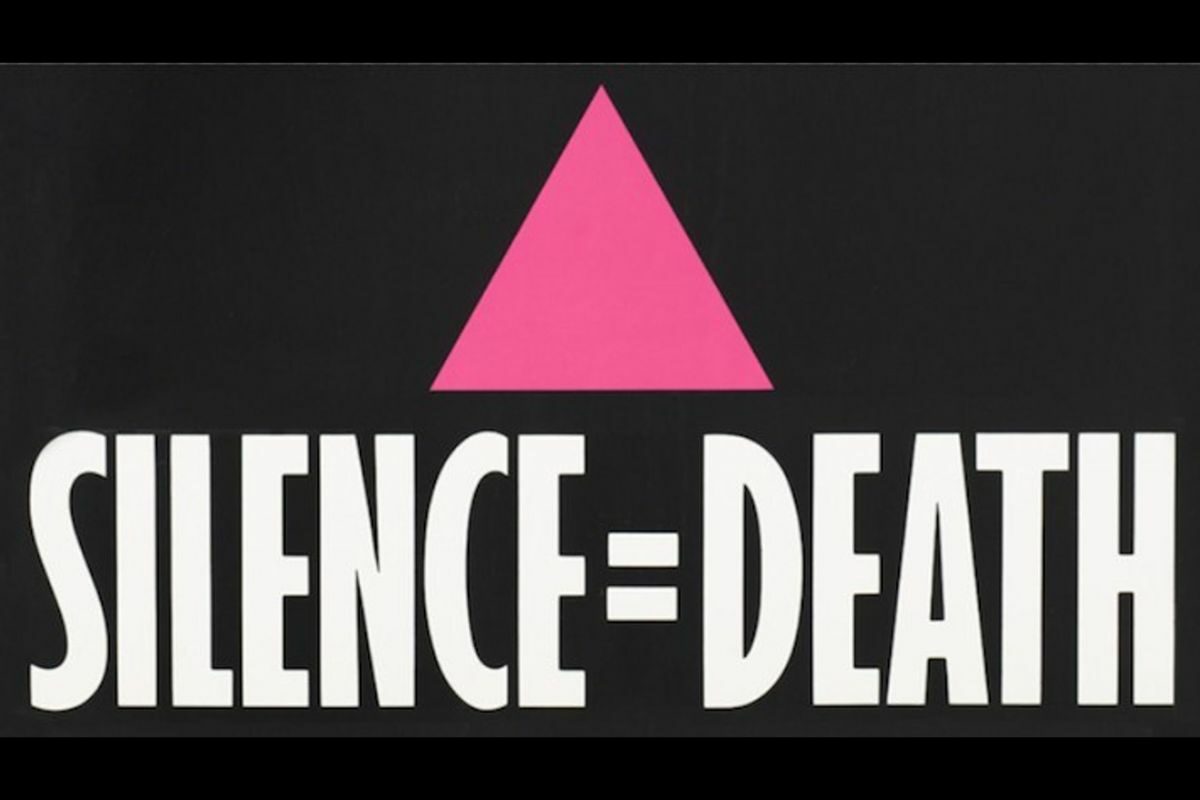Avram Finkelstein, an American artist, and the Silence=Death Collective produced the “Silence=Death” poster in 1986. Few images are as instantly identifiable as this one. The piece was intended as an urgent response to the AIDS crisis and the political fallout that resulted at the time.
However, given the current social and political climate, ongoing efforts to advance the rights of the LGBTQ+ community, and the estimated 38 million people living with HIV worldwide, those short but powerful words feel especially relevant right now. Finkelstein recalled the creation of the poster and its meaning almost 40 years later when speaking with Dave Harper, executive director of the NYC AIDS Memorial Society, at NADA New York in early May.
“Shortly after the man I was building my life around, Don Yowell, died of AIDS in 1984, I formed a consciousness-raising collective with five of my friends to help me through it,” Finkelestein said. The group, which also included Brian Howard, Oliver Johnston, Charles Kreloff, Chris Lione, and Jorge Soccarás, found themselves discussing the impending political crisis and the lack of public dialogue surrounding it more and more. Finkelstein proposed they create a poster to start the debate, using the wheat-pasting custom that was popular in New York City then.
Each aspect of the poster was debated and thought upon by the collective for nine months. They desired it to be friendly and critical, particular and adaptable. They consciously decided to utilize language that sounds like advertisements because, in Finkelstein’s words, “advertising, in my opinion, has become the folk language of capitalism.”
The final design, which read “Silence=Death” with a pink triangle floating above it in an upward direction, was intended to appear cryptic from a distance but still compel passersby to get closer, read the small print, and finally act.
Do check out more related articles:
- How Did Pele Die at Age 82? What Illness does He suffer From?
- Barbara Walters Cause of Death: How Did She Die?
It was intentional to employ a pictographic sign rather than depict a human being. The pink triangle originated in the Holocaust when Nazis compelled homos*xual prisoners in concentration camps to wear a pink triangle on their uniforms. American homos*xual rights activists in the 1970s later employed the design. It even appeared in Martin Sherman’s play Bent from 1979, which focused on the persecution of the LGBTQ+ community by the Third Reich.
Finkelstein said during his lecture at NADA, “One of the collective members had recently been to Dachau [in Germany] and believed that the pink triangle was pointing up,” The individual who designed the poster promised to do research but didn’t. In actuality, the triangle in the camps pointed downward. After the initial publishing, the collective had the chance to fix the error but instead chose to accept the deviation from its source and the victimhood brought on by its connections to the Holocaust.
One of our generation’s most powerful visual statements is the result of their choice. After posting the Silence=Death banner on the streets of New York, they were quickly encircled by a group of people who later founded the AIDS activist organization ACT UP. Photographer Donna Binder, who documented many of their protests, recalls attending the inaugural ACT UP meeting. This was quite significant. It was tragic; people were passing away. “This was important. It was dire; people were dying. It was a desperate movement because it was a race against time,” Binder told W in a recent interview. “And I think the amazing people who came together to form ACT UP came with many different expertise and talents. ACT UP was great at distilling a message into something that could be seen visually quickly or into sound bites.”
The image on the poster has come to be associated with the LGBTQ+ rights struggle and is still used by ACT UP today. Last year, it was a component of the “More Life” show at David Zwirner, which also featured the sale of a limited-edition print of the poster.
The placement of “Silence=Death” in the public domain has led to its usage for many situations far beyond its original purpose. “Its continuously evolving social context underscores how carefully crafted images may be utilized to open portals through which evolving social dynamics can maneuver between history, political resistance, and commerce without sacrificing the ability to represent the efficacy of cultural production during moments of social injustice,” Finkelstein said.
Do check out more related articles:
- Who is Anndel Taylor, and How Did She Die?
- Jo Mersa Cause of Death: How Did Grandson of the Famous Bob Marley Die?
But it’s crucial to remember the tragedy the billboard intended to convey amid this month’s Pride messaging (and businesses’ numerous, blatant attempts to cash in on the movement). The fight for LGBTQ+ rights continues, and the AIDS epidemic remains very much alive.
Final Lines
What Do you think about Silence=Death? Please share your opinions about the couple in the comments section below. Please keep checking back with us for the most recent information from the entertainment industry. Follow us on venturejolt.com.
